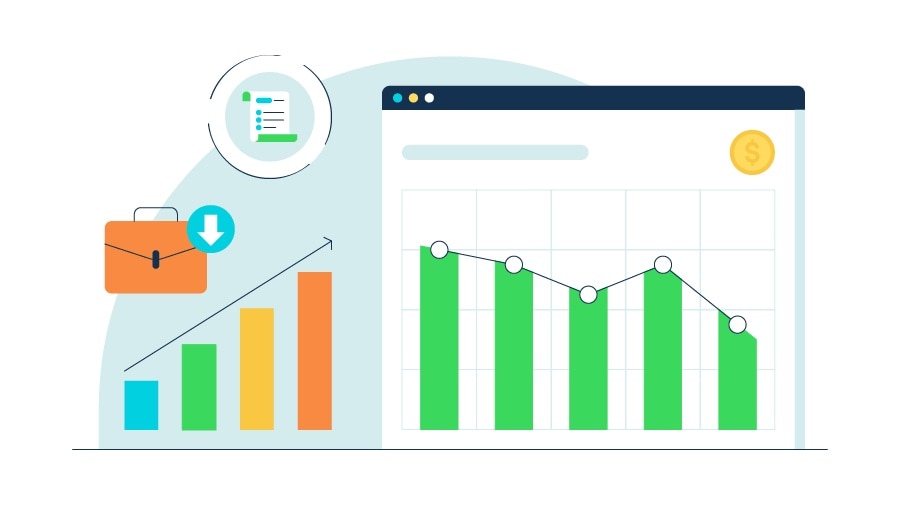Do you provide accounting support to employers in Canada? If so, the Canada Pension Plan (CPP) is a hot topic. After all, when someone is self-employed, or if they’re an employer hiring their first employee, figuring out the CPP is essential. When you have a thorough understanding of employers’ obligations, it’s easier to advise them and help ready their finances for CPP contributions.

What Employers Need to Know About the Canadian Pension Plan
Understanding the Canada Pension Plan
The CPP is Canada’s retirement pension program. Almost everyone in the country makes required contributions to the CPP after they turn 18 and start working; the contribution amount depends on the person’s salary. Employers deduct these contributions from the employee’s pay. Employees aren’t the only ones who pay into the CPP—they pay half of the contribution, and employers pay the other half. Do you have clients who are self-employed? If so, they must pay the entire amount of the pension plan contributions.
The money from CPP contributions goes to Service Canada. After your clients retire, the CPP pays them a retirement income. The retirement amount varies based on how much the person contributed and how many years they paid into the program. The CPP is mandatory for all of your clients who are employers, employees or self-employed.
How Much do Employers Contribute to the Pension Plan?
Each year, the government sets rates, minimums and maximums for the CPP. These amounts, which can change from year to year, determine how much employers and employees pay into the CPP.
- Basic exemption amount: This is the minimum amount that an employee must earn before they start making CPP contributions. For 2019, this minimum is $3500. Employees and employers do not have to pay CPP on the first $3500 of any employee’s salary.
- Contribution rate: This is the percentage of the salary that both the employer and employee pay to the CPP. If your client is self-employed, they need to pay both the employer and employee contribution up to the self-employed maximum (see below).
- Maximum employer and employee contribution: This amount is the most that the employee and employer must each pay into the CPP in a year.
- Maximum self-employed contribution: This is the maximum amount a self-employed person needs to pay into the CPP each year.
- Maximum contributory earnings: Employees and employers pay CPP contributions on any income up to this amount. Do your clients make more than the maximum? If so, they don’t need to pay CPP on the extra dollar amount.
Imagine that one of your clients has a single employee. That employee makes $53,500 per year. The first $3500 of that income is exempt from CPP, which means that their total qualifying income is $50,000. In 2019, both the employee and the employer must pay 5.1% into the CPP. That means that over the course of the year, the employer needs to deduct $2550 from the employee’s paycheques. In addition, he must also match that contribution by paying $2550 into to the CPP on the employee’s behalf.
What if you have a self-employed client who makes $53,500? In that case, the person would pay the entire contribution of $5100.
What Employees are Eligible for CPP Contributions?
When you’re representing employers, it’s important to know which employees are eligible for CPP contributions. Your client must deduct and pay CPP for any employee who is:
- Between the ages of 18 and 69
- Earning more than the basic exemption ($3500 per year as of 2019)
- Not disabled under the CPP
There are some exemptions to these rules. Employers do not have to deduct CPP contributions for:
- Workers who make less than $3500 per year
- Employees who have submitted Form CPT30 (see below)
If your clients have older employees, you should be aware of Form CPT30, Election to Stop Contributing to the Canada Pension Plan. This form is available to employees between the ages of 65 and 70 who have started to receive a CPP pension—when they fill it out, they can stop making CPP contributions.
What Types of Income Qualify for CPP Contributions?
Your clients’ CPP contributions are based on an employee’s gross income—the amount of money they get before taxes. This includes:
- Taxable benefits the employer provides, such as a mobile phone
- Allowances, such as a per diem for food on business trips
The pensionable income only applies to employment and business income. If your clients’ employees receive any other income, such as dividends from an investment, you don’t need to include it in the CPP calculation.
How to Calculate Canadian Pension Contributions for Employers
Do your clients need to deduct and pay CPP for their employers? It’s a good idea to know how to calculate the contributions for each pay period.
- Count the number of pay periods in a year
- Divide the minimum exemption by the number of pay periods to get the exemption amount for each pay period
- Calculate the qualifying (pensionable) income for the pay period by adding the employee’s gross pay to any taxable benefits and allowances
- Subtract the pay period exemption in Step 2 from the pensionable income in Step 3 to get the amount that qualifies for CPP contributions
- Calculate the CPP contribution by multiplying the current CPP rate by the amount in step 4. This is the amount the employer needs to deduct from the employee’s paycheque. It’s also the amount the employer needs to pay on the employee’s behalf
Imagine that one of your clients has 24 pay periods in a year and pays the employee $500 per pay period. The employer is using a CPP contribution rate of 5.1%. To calculate the exemption, you would do the following calculations:
- $3500 minimum exemption / 24 pay periods = $145.83 pay period exemption
- $500 gross pay – $145.83 pay period exemption = $354.17 pensionable income
- 5.1% CPP contribution rate x $354.17 pensionable income = $18.06 CPP contribution
That means that in each pay period, the employer should deduct $18.06 from the employee’s paycheque, and also pay $18.06 as the employer CPP contribution, for a total of $36.12. If you’re working with a self-employed person, they’d need to pay the entire $36.12 each pay period.
If your clients are handling the deductions on their own, the right payroll software can be a big help. It automates the CPP deductions, so your clients don’t need to worry about making complicated calculations every month.
What are Employers Obligated to do Under the CPP?
As you handle accounting for an employer, it’s a good idea to understand what the CRA requires them to do for the CPP. They must:
- Withhold CPP contributions from employee paycheques
- Pay employee and employer CPP contributions
- Report CPP contributions on their business tax returns and employee T4 slips
If your clients are self-employed, they can report and pay their CPP contributions using their T1 return.
Understanding the 2019 CPP Enhancements
As an accountant, you’ve probably heard about the 2019 CPP enhancements. Starting on Jan. 1, 2019, CPP contribution rates and maximum income levels slightly rise. This shouldn’t change your process. It simply means that your clients who are employers must withhold and pay slightly more. Keep in mind that the government plans to continue increasing CPP contributions through the year 2023.
CPP Resources for Employers and Accountants
When you’re handling accounting for employers, it’s a good idea to keep yourself and your clients updated on the latest pension plan developments. Some helpful CPP resources are:
- Current CPP rates and contribution limit charts
- Employer requirements during the 2019 CPP enhancement
- Understanding pensionable earnings
As an accountant, you can expect to receive many questions about Canadian pension contributions. When you know the rules, it’s easy to advise your clients on how to manage their finances. Need help staying on top of new rules and client needs? QuickBooks Online Accountant helps you manage your work, your clients and your practice, all with one login. Sign up for free.


